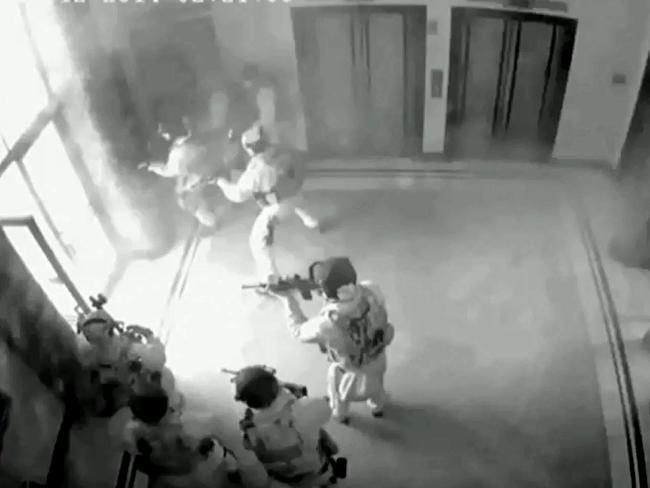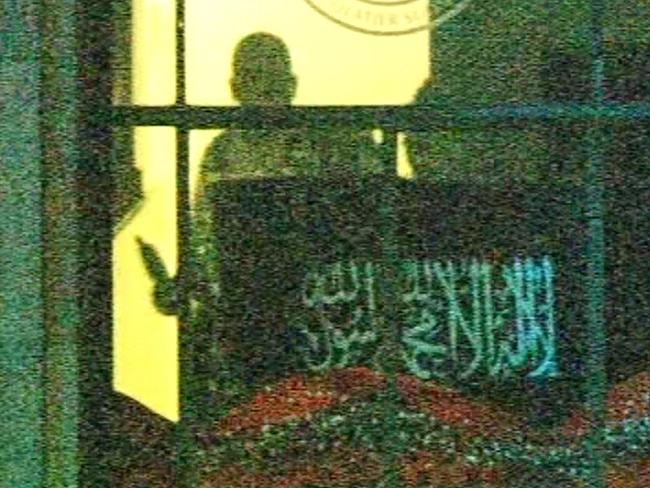Sydney siege inquest: First cops on scene reveal horror
POLICE commanders in charge of operations during the Lindt cafe siege were “supportive” of meeting one of the gunman’s demands.

POLICE commanders in charge of operations during the Lindt cafe siege were “supportive” of meeting one of the gunman’s demands and allowing him to speak on ABC radio in exchange for the release of some hostages, an inquest has heard.
Superintendent Allan Sicard, who was acting as the Sydney City Local Area Commander when the ordeal started, told the inquest into the deaths arising from the siege he “spoke to the negotiators (and told them) we were supportive of that” (agreement).
“In my view that was OK to consider,” he said.
Supt Sicard said he made a call to the police operations centre and spoke to commander Michael Fuller about making a deal with gunman Man Haron Monis.
“We needed to run that by the police commander, Mr Fuller, (who was) supportive of considering the idea of the ABC if that secured the release of some hostages,” he said.
“His response back was they were also considering that as an option.”
Supt Sicard has not yet been asked during his testimony why the deal didn’t eventuate.
He remains on the stand as the inquest continues.
It’s the first time it has been publicly revealed that police considered meeting any of Monis’ demands.
The gunman also requested to speak with then-prime minister Tony Abbott over the phone.
None of his demands were met.
Supt Sicard also told the inquest how police tried to avoid a repeat of the chaos that gripped New York after the September 11 attacks.
Supt Sicard was the first witness to take the stand this morning during the police management stage of the inquest into the deaths arising when Man Haron Monis held 10 customers and eight employees of the Lindt Cafe hostage in December 2014.
Supt Sicard was also in command during the Mosman collar-bomb case in 2011 and said the experience, combined with what authorities had seen and learnt during the September 11 World Trade Center attacks, taught him invaluable lessons that he relied on in leading the response during the siege.
“(What I learned from the collar bomb ordeal was to ensure than in a) worst case scenario if a bomb went off, ambulance and fire rescue have a triage plan on how they are going to go in and address (that).”
He said there were bomb threats at Sydney Opera House, Town Hall railway station, Channel 7 and Circular Quay at the time.
Supt Sicard ordered nearby buildings, including a childcare centre, Channel 7, the Reserve Bank and Westpac to be evacuated because they were close to the alleged bomb site and within “firing line” of the gunman.
“Perimeters were cleared out in reference to if there was a bomb in the cafe,” Supt Sicard said.
Supt Sicard said he delegated traffic management to relevant departments to avoid a repeat of the poor traffic management he believed had taken place during the September 11 attacks.
“We’ve all seen pictures of the World Trade Centers with police cars all jammed in and we didn’t want that,” he said.

Supt Sicard also said police were visibly “distressed” at having to back away from the window after seeing what appeared to be a bomb in the gunman’s backpack.
Supt Sicard said when he first arrived on the scene during the early stages of the siege he had a discussion with Senior Constable Paul Withers about what he had seen from a vantage point by the cafe window.
“My memory of him was how distressed he was,” Supt Sicard said.
“He had seen the shotgun and his motivating factor for backing away was the backpack and the wires in the backpack.
“He was (so) distressed that he had to back away.
“He was looking at the hostages and they were looking at him imploringly and that was his great distress.”
Supt Sicard said Sen-Con Withers was one of the first officials to provide an insight into what was going on inside the cafe.
“It was quite obvious from his account there were at least 12 hostages,” he said.
“He could see that the offender was wearing (a backpack) and there were wires coming from the backpack, which made him think it was a bomb.”

Supt Sicard’s testimony came after NSW Police this morning pushed for closed sessions when giving evidence relating to methodology.
Suppression orders are already in place and tactical operations officers can only be identified by pseudonyms.
Further discussions will take place later in the week to determine what will and won’t be heard publicly in relation to methodology as more officers are scheduled to take the stand.
No witnesses are to discuss methodology in public sessions in the meantime.
The siege, which began when gunman Man Haron Monis entered the cafe on December 15, 2014, and took 18 people hostage.
Cafe manager Tori Johnson and barrister Katrina Dawson were killed during the siege.
The inquest will also examine the police response with the findings expected to be delivered later this year.
Over the past two weeks, the survivors took the stand one by one, to relive the horror they each experienced at the hands of Monis, who took 18 people hostage on December 15, 2014.
The inquest continues.




